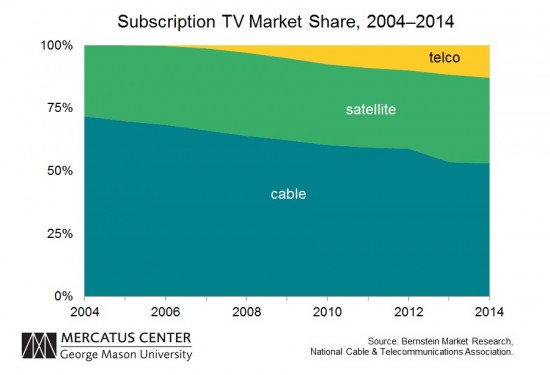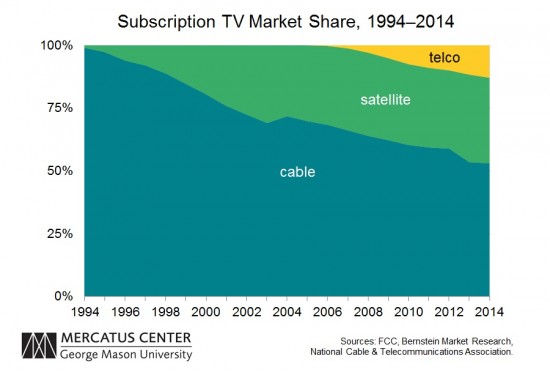The FCC’s Open Internet Order is long and complex and the challenge to it is likewise difficult to untangle. The agency regularly engages in ad hoc rulemaking that results, per Judge Posner, in “unprincipled compromises of Rube Goldberg complexity among contending interest groups viewed merely as clamoring suppliants who have somehow to be conciliated.” The Open Internet Order is no exception and therefore faces several legal vulnerabilities.
In my view, the soft underbelly of the Order is the agency’s position that ISPs are not First Amendment speakers. While courts are generally very deferential to agencies, they are not deferential on constitutional questions. Further, the court panel (two Democrat appointees, one Republican appointee), unfortunately, was not in the carriers’ favor. The major carriers, however, have focused their arguments on whether the agency should receive deference in classifying Internet access as a telecommunications service.
That said, it’s possible the major carriers could get at least a partial win with their arguments. That likelihood is increased because Alamo Broadband and Dan Berninger raised the First Amendment problems with the Order. Given the strength of the First Amendment arguments, the Court might shy away from reaching the issue of whether ISPs are speakers. Below, some thoughts on the moments during oral arguments that surprised me and what went according to predictions.
The Unexpected
A receptive ear in Judge Williams re: the First Amendment arguments. (Good for: ISPs) The First Amendment arguments went better than I’d expected. Alamo and Berninger’s counsel, Brett Shumate, argued the First Amendment issues well and had good responses for skeptical questions. Shumate found a receptive ear in Judge Williams, who seemed to understand the serious First Amendment risks posed by the Order. Williams repeatedly brought up the fact that MetroPCS a few years ago tried to curate the Internet and provide its customers free YouTube, only to face resistance from the FCC and net neutrality activists.
The other two judges were more skeptical but Shumate corrected some misconceptions. The biggest substantive objection from Srinivasan, who sounded the most skeptical of the First Amendment arguments, was that if the Court reaches the First Amendment issues, it has determined that the FCC has reasonably classified Internet access as a common carrier service. He suggested that this means the First Amendment issues mostly disappear. No, Shumate explained. Congress and the FCC can call services whatever they want. They could declare Google Search or Twitter feeds a common carrier service tomorrow and that would have zero effect on whether filtering by Google and Twitter is protected by the First Amendment. Tatel asked whether Section 230’s liability protections suggest ISPs are common carriers and Shumate corrected that misconception, a subject I have written on before.
A major FCC concession that ISPs have to option to change their offerings and escape common carrier regulation. (Good for: ISPs) Title II advocates are spinning the terse First Amendment exchanges as a victory. I’m not convinced. The reason the arguments didn’t generate more heat was because the FCC lawyer made a huge concession at the outset: ISPs that choose to filter the Internet are not covered by the Open Internet Order.
FCC lawyer: “If [ISPs] want to curate the Internet…that would drop them out of the definition of Broadband Internet Access Service.”
Judge Williams: “They have that option under the Order?”
FCC lawyer: “Absolutely, your Honor. …If they filter the Internet and don’t provide access to all or substantially all endpoints, then they drop out of the definition of [BIAS] and the rules don’t apply to them.”
This admission seriously undermines the purposes of the Order. The FCC is stating outright that ISPs have the option to filter and to avoid the rules. That seems to mean that Comcast’s Stream Internet protocol television service, where it is curating streaming TV programs, is not covered by the rules. If Facebook’s Free Basics or a similar service launched in the US giving free, limited access to the Web, that is not covered by the Order. Finally, this means that the many broadband packages that offer family-friendly filtering are outside of the FCC’s rules. It’s not clear how much remains to be regulated since all ISPs reserve the right to filter content and each filters at least some content.
Judge Tatel directing most questioning. (Good for: wash) Many view Judge Tatel as the “swing vote” but I was surprised at the relative quiet from Williams and Srinivasan. Tatel was the most inquisitive, by my listening. He was much more skeptical of some of the FCC’s arguments regarding interconnection than I expected but also more skeptical of the First Amendment arguments than I expected.
Little discussion of Chevron Step 0. (Good for: FCC) Many on the free-market side wanted to make this case about Chevron Step 0 and the notion that Title II is too economically and socially significant to warrant deference. Unfortunately, at oral argument there was very little discussion of Chevron Step 0.
The Expected
Focus on agency discretion. (Good for: FCC) The judges generally seem to see this as a straightforward Chevron case and the questions focused on Chevron Step 1, whether there is ambiguity in the statute about “offering telecommunications” for the FCC to interpret. As expected, the FCC did fairly well in their arguments because these technical issues are very hard to untangle.
On Chevron Step 2, whether the reinterpretation of “telecommunications service” to include Internet access was reasonable, the US Telecom attorney was strong. He leaned heavily on the fact that in Section 230, which amends the Communications Act, Congress announces a national policy that the Internet and specifically Internet access services, should remain “unfettered by Federal regulation.” That would seem to preclude the FCC from using, at the very least, its most powerful regulatory weapon–common carriage–against Internet access providers. Even if “telecommunications service” is ambiguous, he stated, it was unreasonable to include Internet access in that definition.
Focus on whether mobile broadband can be properly classified under Title II. (Benefit: ISPs) As many commentators have noted, the idea that the traditional phone network and the mobile broadband network can be classified as the same interconnected network is far-fetched. Each judge seemed very skeptical of the FCC’s argument and Tatel suggested there was a lack of adequate notice.
Srinivasan pointed out that striking down the wireless rules and maintaining the wireline rules would mean that using the same tablet in different areas of your house would lead to different regulatory treatment, depending on whether you’re on the cellular broadband network or Wifi. Title II supporters think this is pretty clever gotcha but communications law already abounds with seemingly absurd FCC- and court-created legal distinctions. (The FCC invents its own absurd distinction and offers vastly different regulatory treatment for DNS operated by an ISP v. DNS operated by literally anyone else.)
Conclusion
Predictions about major regulatory cases are notoriously difficult. I’ve read (and made) enough predictions about big court cases to know that prognosticators almost always get it wrong. If that’s the case, at least consider one thought-provoking outcome: the rules are largely struck down because the FCC provided inadequate notice on most of the major issues of classification.
If the rules, in contrast, were sustained under Chevron and judged to have had adequate notice, the Court would likely need to confront the First Amendment issues. I don’t think Tatel and Srinivasan, especially, want to rule on these hard constitutional questions. The judges must know the Supreme Court has, as Prof. Susan Crawford says, an “absolutist approach” to the First Amendment that protects speakers of all kinds. Sustaining the rules means the FCC risks a loss on First Amendment grounds on appeal that would nearly eliminate the ability of the FCC to regulate the Internet. For that reason, and because of the notice problems, the Court may strike down the rules on notice and comment grounds, thereby preserving the ability of the FCC to take a fourth bite at the apple.



 The Technology Liberation Front is the tech policy blog dedicated to keeping politicians' hands off the 'net and everything else related to technology.
The Technology Liberation Front is the tech policy blog dedicated to keeping politicians' hands off the 'net and everything else related to technology.
Quick Thoughts on FAA’s Proposed Drone Registration System
by Adam Thierer on October 19, 2015 · 1 comment
Here are some quick initial reactions on the proposed registration rules: Continue reading →